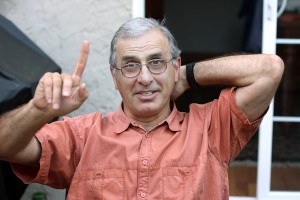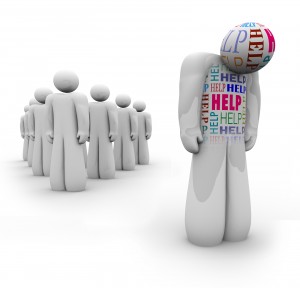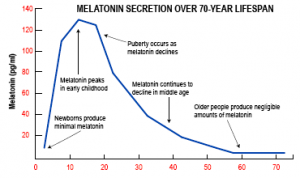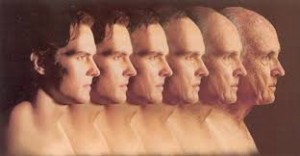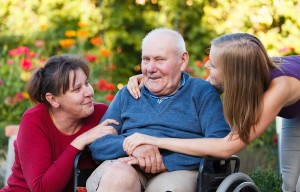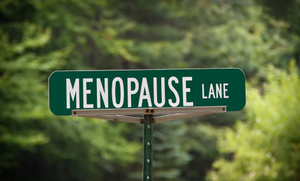Although in this recent study from Finland researchers found that grumpiness in older age seems to lead to dementia at a faster rate, I like to emphasize here that there may be an under lying problem of hormone deficiency.
Other studies have shown that in males low testosterone levels are associated with grumpiness and dementia is setting in sooner in those males who are deficient for testosterone. For older grumpy females it is the lack of progesterone that has been found to be deficient and when you replace it, memory comes back, symptoms of menopause reverse themselves and the grumpiness is gone. Testosterone replacement may be required by as many as 1 in 4 men in the their 40’s as is summarized in the article from Great Britain.
How can we tell whether there is a change in an older man? There are quite a few symptoms that can be seen by loved ones around this man: an increase in abdominal girth, shrinking muscles, lack of energy, irritability. The key is to get him to the doctor and ask the doctor to order a bioavailable testosterone blood test.
According to medical research 84% of men and 62% of women in the age group of 57 to 64 have been sexually active in the previous 12 months. Take an older age group of 65 to 74 and still 67% of men and 40% of women are sexually active. Fast-forward to age 75 to 85 and the rate has dropped to 39% of men and 17% of women (Ref.1). A person’s sexual activity is a barometer how well the hormones are balanced. These figures show that bioidentical hormone replacement has not been well accepted. Women have a reason as they were misled by Big Pharma as was shown in the
Women’s Health Initiative:
The National Institutes of Health had funded a large study (the Women’s Health Initiative) to clarify what was going on with regard to side effects and effects of HRT.
Unfortunately, synthetic non-bioidentical hormone products were used in these studies (Premarin and Provera) instead of bioidentical estrogen and progesterone. The results of the Women’s Health Initiative were devastating. In 2002 doctors were warned that Premarin and Provera used as HRT would cause increased heart attack rates and breasts cancer, which led to premature death. Overall the placebo group did better than the experimental group and this is why the trial was prematurely stopped. As a result of the wide publicity regarding the negative results of the Women’s Health Initiative postmenopausal women either do not see their physician for hormone replacement or are advised by conventional doctors that only small amounts of Premarin could be used for not more than 5 years for fear of causing breast cancer. Medico-legal considerations are at play and the whole issue of HRT after menopause has been politicized.
Problems now for HRT:
It is like a negative shadow has been cast forward with regard to hormone replacement because of the Women’s Health Initiative. People are still confused and don’t understand that the synthetic hormone-like drugs from Big Pharma are like an ill-fitting key for the hormone receptors in the body whereas bioidentical hormones are the perfect fit.
Otherwise there would not be a 45% drop-off (from 62% to 17%) in sexual activities in women from age 60 to 80. Men have it somewhat easier: their drop rate between age 60 an 80 is also 45% (from 84% to 39%), but as they entered into male menopause 10 to 15 years later than women did with menopause, their sexual activity is still double that of women at the age of 80.
However, if people could overcome their unrealistic fear of bioidentical hormones, hormones that fit the body’s hormone receptors a lot more people would be encouraged to use bioidentical hormone replacements.
What, if the grumpy, old man is willing to see his doctor?
The doctor should look at all of the hormones including a fasting insulin level as hyperinsulinism often complicates hormone replacement. Thyroid, which often is also lowered at an older age should be also tested (T3, T4 and TSH). A saliva hormone test can show a panel of 5 hormones: cortisol, DHEAS, testosterone, progesterone and estradiol. As hormones are in a balance with each other this allows to compute the testosterone to estrogen ratio, which ought to be 20 or higher. But hormones alone are not the answer. There needs to be a combination of proper nutrition (cut out sugar, starchy foods, preferably switch to organic foods to escape the xenoestrogens that foul up your hormone balance), also exercise and use vitamins and supplements. I have summarized all of this in my recent book “A survivor’s Guide to Successful Aging” (Ref.2).
When the hormone tests come back the doctor will likely order the missing hormones (hopefully as bioidentical hormones).
It can take 2 to 3 months before the full effect of bioidentical hormone replacement is seen. But most men will be astounded how well they can feel. He will notice that he does not tire with exercising. His muscle mass builds up; his posture improves. His stamina comes back. He will find that the previously foggy thinking is gone and his thought processes have become clear again. And yes, his sex live comes back. So now he has to talk to his sex partner about her bioidentical hormone replacement so they both can enjoy the benefits!
Hidden benefits of bioidentical hormone replacement:
The bones become stronger, the heart beats harder and better, the brain thinks clearer, because the key organs like the brain, the heart and the bones have the appropriate hormone receptors (in both sexes). No, this is no exaggeration. This can be measured by an exercise tolerance test (for the heart). Bone density can be measured and has been done (2% to 4% increase per year). Brain function is indirectly visible to the people around the person: apart from new vitality, improvements in mood and more energy, the grumpiness is gone and the person is perceived as a pleasant person once again.
Conclusion:
The observation of an “old, grumpy man” when he entered the male menopause is accurate, but should not distract from the fact that he has a responsibility to look after himself. It is important to recognize that it is not only women who enter the menopause, but that men 10 to 15 years later will do the same. Both sexes enter a state of hormone disbalance that is treatable. The answer is to replace the hormone deficiency with the missing bioidentical hormones.
More information on male menopause (=andropause): http://nethealthbook.com/hormones/hypogonadism/secondary-hypogonadism/male-menopause/
References:
1.Rakel: Textbook of Family Medicine, 8th ed., copyright 2011 Saunders
2.Dr.Ray Schilling: “A Survivor’s Guide to Successful Aging“, Amazon.com, 2014
Last edited Nov. 8, 2014

